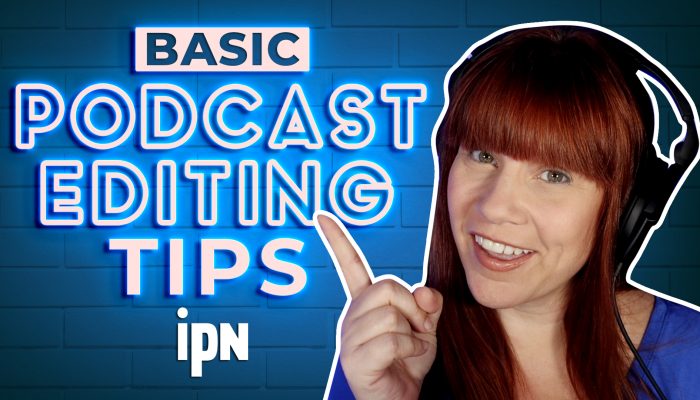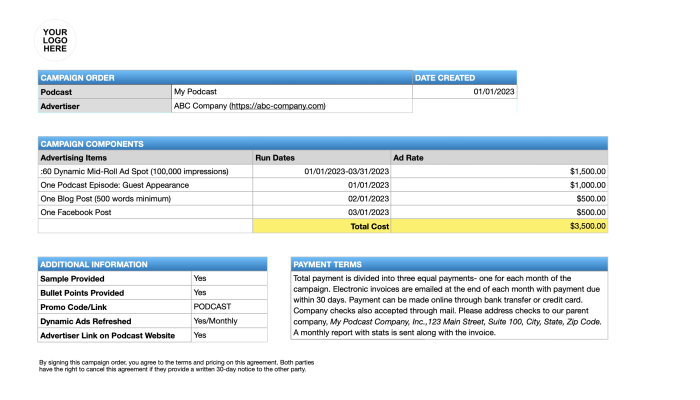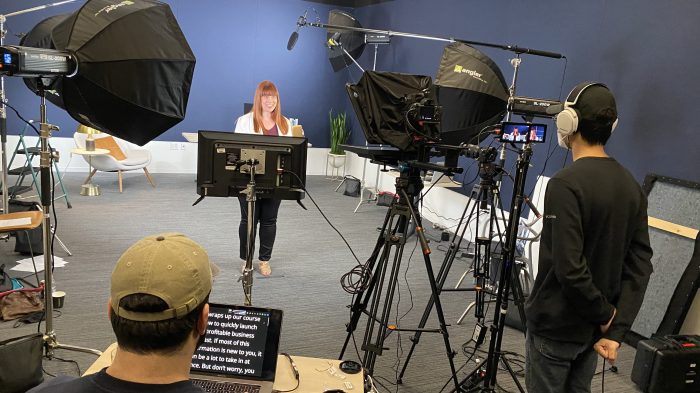
Acoustics play a pivotal role in any space where sound is produced, including your podcast studio. Prioritizing your studio’s acoustics isn’t about chasing an elusive ‘radio voice’ or creating a fancy recording space. It’s about clarity and consistency – ensuring your voice is captured and delivered in its purest form, without competing with echoes, background noise, or distortion.
The Basic Concepts of Acoustic Treatment
Sound travels in waves, generated by vibrating objects. In the context of your podcast, this is typically your voice. These waves disperse in all directions until they encounter an obstruction, like the walls of your studio. Three key interactions can occur: absorption, reflection, or diffusion.
Absorption occurs when the material of the barrier, such as acoustic foam, takes in the sound waves, reducing their energy. This process is crucial for achieving clear and concise audio in your podcast. Reflection, conversely, is when the sound waves bounce back, creating unwanted echoes and reverb. It’s this excess reflection that can make your podcast sound as if it’s recorded in an empty room or hall. Lastly, diffusion breaks up the sound waves, scattering them in multiple directions to create a more balanced sound environment.
Acoustic treatment is all about managing these interactions. The goal is to optimize absorption, limit reflection, and use diffusion effectively to create a lively but clean recording environment.
Assessing Your Room Size and Shape
Before diving into the specifics of acoustic treatment options, it’s essential to understand the canvas you’re working with – your recording room. Both the size and the shape of a room impact its sound.
Large rooms, for instance, can cause delayed echoes because of the longer distance sound waves travel. In contrast, smaller rooms may produce a quick, fluttering echo as sound waves ricochet between close walls. The shape of the room also plays a role, with cubic or rectangular rooms potentially amplifying specific frequencies and creating “standing waves”. This can lead to inconsistent sound quality, which can detract from the overall listening experience.
Also, every room has a ‘sweet spot’—an area where sound best converges, making it the ideal place to record. This spot is typically away from walls to avoid exaggerated bass frequencies or unwanted reflections. Identifying this area gives you a starting point for deciding what acoustic treatment you need to balance out your studio.
Choosing the Right Acoustic Treatment for Your Recording Space
When it comes to improving the sound in your room, there are three main types of acoustic treatment. These include sound absorbers, diffusers, and bass traps.
Sound Absorbers
Sound absorbers are used to soak up sound waves. This helps reduce echoes and background noise. They can be built with different materials to better absorb different sound frequencies.
Light materials like foam panels are easy to put up and work well for high sounds, but most low-frequency sounds still pass through them. Heavier materials like fiberglass or mineral wool panels can absorb a wider range of sounds, but they are more expensive, harder to install, and still struggle with bass and sub-bass frequencies.
Diffusers
Diffusers are different from absorbers. Instead of soaking up sound waves, they scatter them in different directions, which helps to balance out the sound in your room. They come in a wide range of different shapes and sizes.
The main job of a diffuser is to spread out sound, not get rid of it. They are usually used together with absorbers to minimize the impact of surfaces that can cause a build-up of specific frequencies or unwanted echoes.
Bass Traps
Low sounds can be tricky to manage. That’s where bass traps come in. They are designed to absorb low sounds that regular absorbers might not catch. They are usually placed in corners where low sounds tend to build up.
Bass traps look like thicker versions of regular sound absorbers. They can be made from the same materials but are designed mostly for corners where low sounds can build up. This allows them to be thicker than sound absorbers to absorb low-frequency sounds.

How to Add Acoustic Treatment in Your Studio
Adding acoustic treatment effectively requires some planning, testing, and even a bit of trial and error. But, once you optimize your studio treatment, the sound quality of your podcast will level up. Here’s how you can acoustically treat your studio:
- Identify problem areas: Start by identifying problem areas in your room. Listen for echoes and notice where sound seems to build up or fall flat. These zones are where you’ll want to focus your acoustic treatment.
- Use a mix of treatments: Decide which types of treatments your studio needs. If you’re dealing with echoes or a ringing sound, sound absorbers could be beneficial. If the sound seems overly focused in one area, or if you want to avoid a completely dead sound, consider using diffusers. And if you’re experiencing a buildup of low frequencies, particularly in the corners, bass traps could be the answer.
- Placement matters: Now that you have your treatments, it’s time to decide where to place them. Placement is critical to how well your treatments will work. Absorbers often work best at reflection points where sound bounces off the wall. Diffusers can be used in areas where sound feels too concentrated. Bass traps are most effective in corners where low frequencies tend to gather.
- Test and adjust: After you’ve placed your treatments, test the sound in your studio. If it’s not quite right, don’t hesitate to move your treatments around. Each room is unique, and finding the ideal setup might take some trial and error. Always remember that the goal is to create a balanced sound environment that allows your podcast to sound its best.
Conclusion
Acoustic treatment is more than just an aesthetic upgrade; it’s an investment in your podcast’s quality and your audience’s listening experience. When you mitigate echoes, manage low frequencies, and diffuse concentrated sound, you create a balanced and clear sound profile that lets your content shine through.









